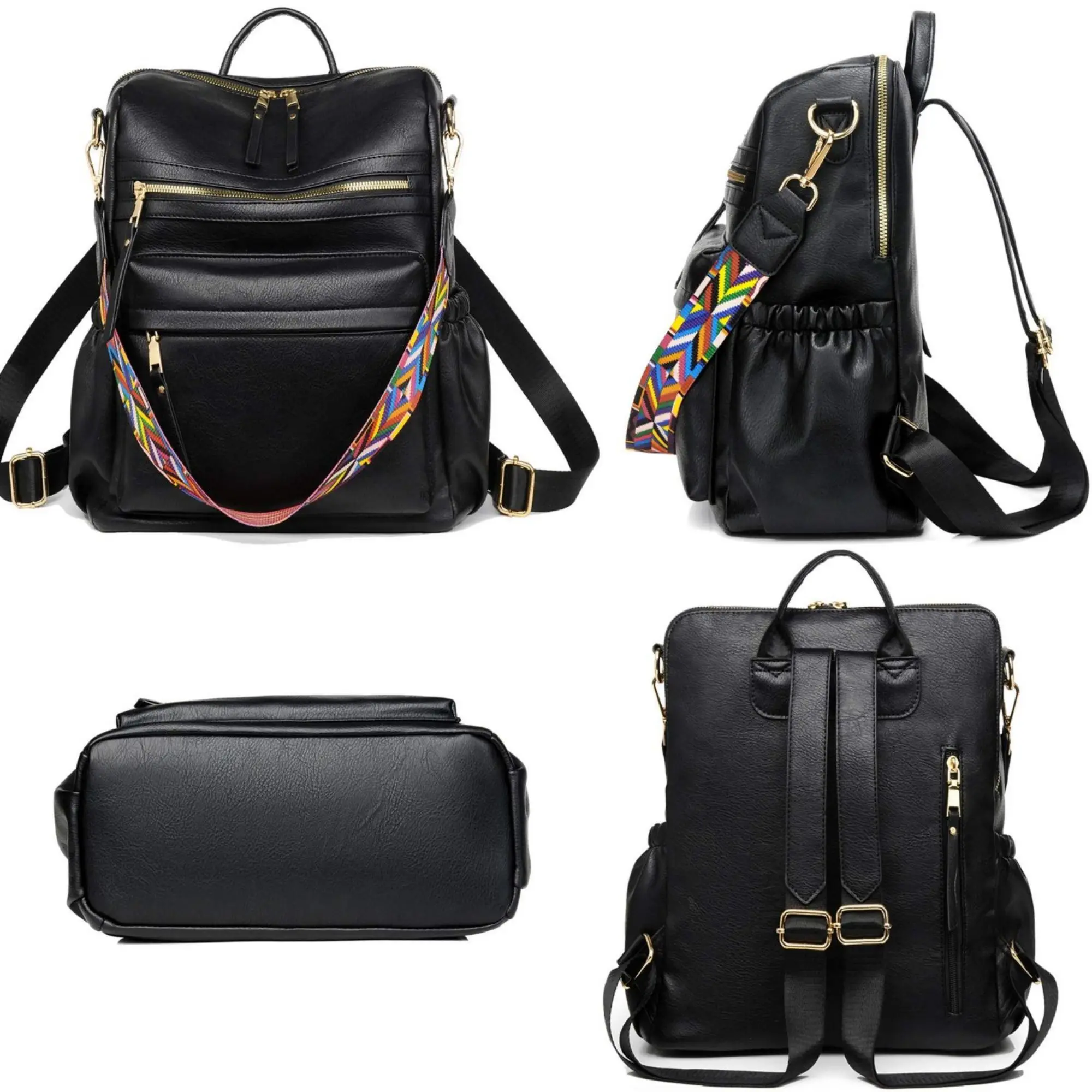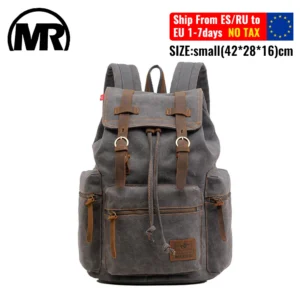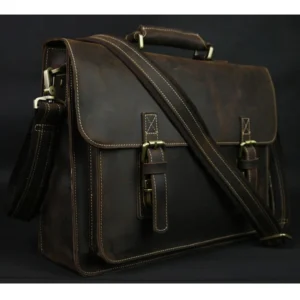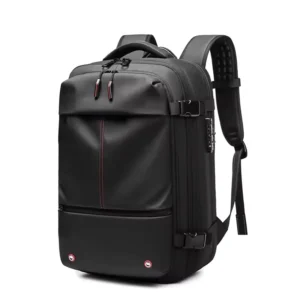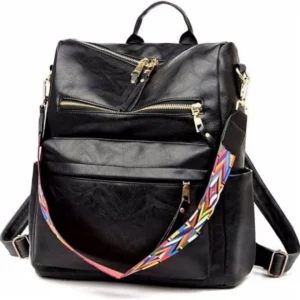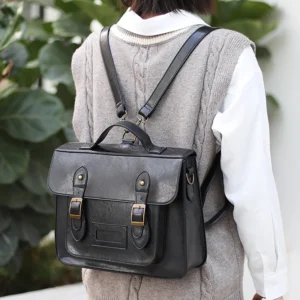The Hidden Power of an Organized Backpack
Backpack organization isn’t just about neatness—it’s about creating a system that helps you navigate your day with ease and confidence. When your backpack is well-organized, you spend less time digging through jumbled contents and more time focused on what matters. Studies suggest that the average person wastes nearly 5-10 minutes daily searching for misplaced items—time that quickly adds up over weeks and months.
Beyond the obvious time-saving benefits, an organized backpack offers several advantages:
- Protection for valuable items like electronics and documents
- Reduced mental burden from not having to remember where everything is
- A more professional appearance in work and academic settings
- Less physical strain from proper weight distribution
- Decreased stress levels throughout your day
Whether you’re a student juggling multiple subjects or a professional balancing work essentials, the principles of effective organization remain similar, though their application might differ. Throughout this guide, you’ll discover practical strategies to transform your backpack from a chaotic catch-all to a streamlined tool that enhances your productivity and peace of mind.
Proper leather conditioning and waterproofing also plays a crucial role in maintaining your backpack’s organization system, especially for those who’ve invested in quality leather options. Additionally, specific organization tips for office backpacks can further refine your approach depending on your professional environment.
Foundation: The Essential First Steps to Backpack Organization
Before implementing any organization system, you need to start with a clean slate. This foundation step is critical and involves thoroughly emptying and assessing your backpack’s contents.
Complete Emptying Technique
- Find a clean, flat surface with good lighting
- Remove all items completely—check every pocket and compartment
- Wipe down the interior with a slightly damp cloth for fabric backpacks
- For leather backpacks, use appropriate leather conditioning techniques to maintain material integrity
- Allow the backpack to air out completely before repacking
Assessment Protocol
Once everything is laid out before you, sort items into three distinct categories:
- Essential items: Things you use daily or several times per week
- Occasional items: Things used weekly or monthly but not daily
- Unnecessary items: Things you haven’t used in over a month
Common unnecessary items often include old receipts, forgotten snacks, dried-out pens, outdated handouts, and duplicate items. Be ruthless in this assessment—many people find they’re carrying 25-30% more than they actually need.
Establishing a regular maintenance schedule—weekly for students during busy semesters and monthly for professionals—prevents accumulation of clutter. The most common mistake during this process is not being thorough enough, leaving forgotten items in rarely-used compartments.
When selecting a new backpack, consider options with organizational features built in, such as dedicated compartments and thoughtful pocket placement. Leather laptop backpacks often offer excellent organizational capabilities while maintaining a professional appearance.
Universal Backpack Organization Principles for Maximum Efficiency
Regardless of whether you’re a student or professional, certain fundamental principles apply to backpack organization that can dramatically improve your efficiency and comfort.
Strategic Categorization Methods
- Function-based grouping: Keep similar items together (writing tools, tech accessories, personal items)
- Frequency-based placement: Items used most often should be most accessible
- Size-based arrangement: Store flat items against the back panel, bulkier items toward the center
Accessibility Hierarchy
Structure your backpack with a clear hierarchy where:
* Most frequently accessed items go in outside pockets or top compartments
* Moderately used items go in the main compartment but near the top
* Rarely used items (but necessary backups) go deeper in the bag
Storage Orientation Techniques
- Vertical storage: Best for notebooks, folders, tablets, and laptops—prevents bending and damage
- Horizontal layering: Ideal for clothing items, cables, and soft accessories
- Combined approach: Most effective for balancing protection and accessibility
Weight Distribution Principles
Proper weight distribution isn’t just about organization—it directly impacts your physical comfort and posture:
- Heaviest items should be placed closest to your back
- Balanced weight between left and right sides prevents muscle strain
- Bottom-heavy configuration creates stability and reduces shoulder strain
Small Item Containment
Small items pose the greatest organizational challenge. Consider these strategies:
* Use small pouches for groups of items (tech accessories, medications, personal care)
* Designate specific pockets for frequently used small items
* Use inner bag clips for keys or ID cards to prevent them from sinking to the bottom
The master office backpack organization tips offer additional insights for professional settings, while quality leather work backpacks provide excellent structural support for implementing these organizational principles.
Student-Specific Organization: Mastering Academic Efficiency
Students face unique organizational challenges with variable class schedules, multiple subjects, and the need to transport everything from textbooks to lab materials. Here’s how to create an academic-focused organizational system:
Academic Materials Organization
- Textbooks and notebooks: Arrange vertically against the back panel in order of your daily schedule, with the last class of the day at the back and first class at the front for easy access
- Binder management: Use a single multi-subject binder with dividers rather than multiple smaller ones when possible
- Paper handling: Keep a dedicated folder for loose papers divided into “to do” and “completed” sections
- Subject separation: Use color-coding for different subjects across notebooks, folders, and even pens
Technology Management for Educational Settings
- Device protection: Use padded sleeves for laptops and tablets, positioned against your back for maximum protection
- Charging solutions: Create a dedicated charging pouch containing all necessary cables and adapters
- Digital-physical balance: For courses with digital textbooks, bring only the essentials in physical form
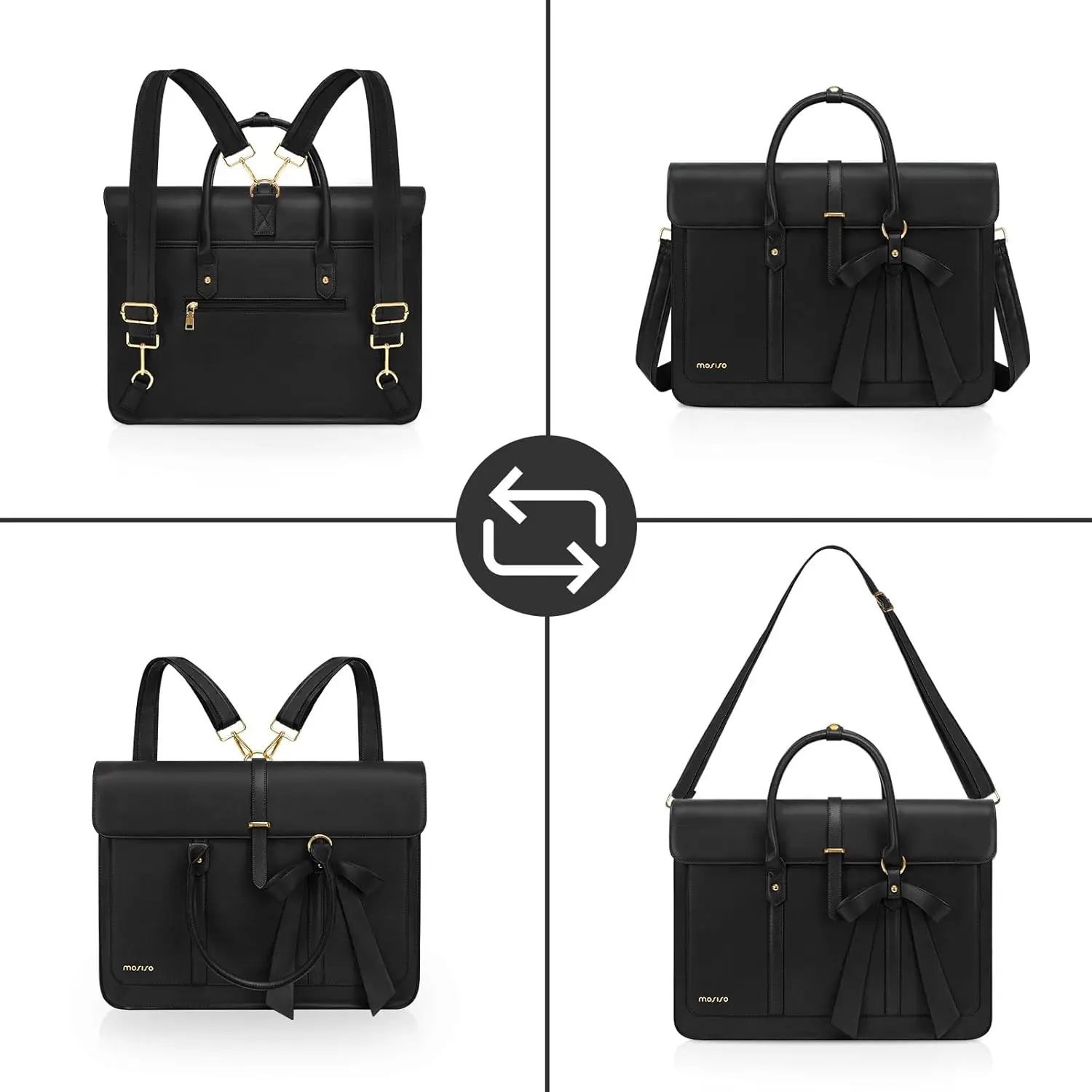
Personal Essentials Organization
- Food and drink: Use leakproof containers in side pockets or isolated compartments away from electronics and papers
- ID and transit cards: Keep in front pockets or attached to easily accessible clips or lanyards
- Emergency supplies: Maintain a small pouch with personal care items (medications, hygiene products)
Assignment Workflow Systems
- Homework tracking: Maintain a single location for assignment notes with due dates
- Project materials: Group project materials together in clear folders
- Paper management: Create a consistent system for handling new assignments vs. completed work
Mastering backpack weight management becomes especially important for students carrying heavy textbooks. Quality leather laptop backpacks with padded compartments offer protection for valuable electronics while providing organizational structure.
Professional Backpack Organization: Efficiency with Polish
Professionals require backpack organization systems that prioritize efficiency, protection of valuable items, and maintaining a polished appearance. Here’s how to optimize your professional backpack:
Work Essentials Organization
- Document protection: Use a slim document folder or portfolio that keeps papers flat and unwrinkled
- Industry-specific tools: Dedicate specific compartments for tools relevant to your profession
- Business card management: Keep a small card holder in an easily accessible pocket
- Meeting preparation: Position notebooks and presentation materials for quick retrieval
Technology Ecosystem Organization
- Multi-device protection: Use padded dividers between devices when carrying multiple electronics
- Comprehensive cable management: Implement a cable organization system using wraps or small pouches
- Security considerations: Position valuable items toward the back of the backpack, away from external zippers
- Power solutions: Carry portable chargers in dedicated pockets with clear labeling for cables
Professional Appearance Considerations
- Weather preparedness: Keep a small, packable umbrella or rain cover in a side pocket
- Personal care items: Maintain a discrete pouch with breath mints, stain removers, or grooming essentials
- Presentation readiness: Keep a lint roller and wrinkle release spray for last-minute appearance touch-ups
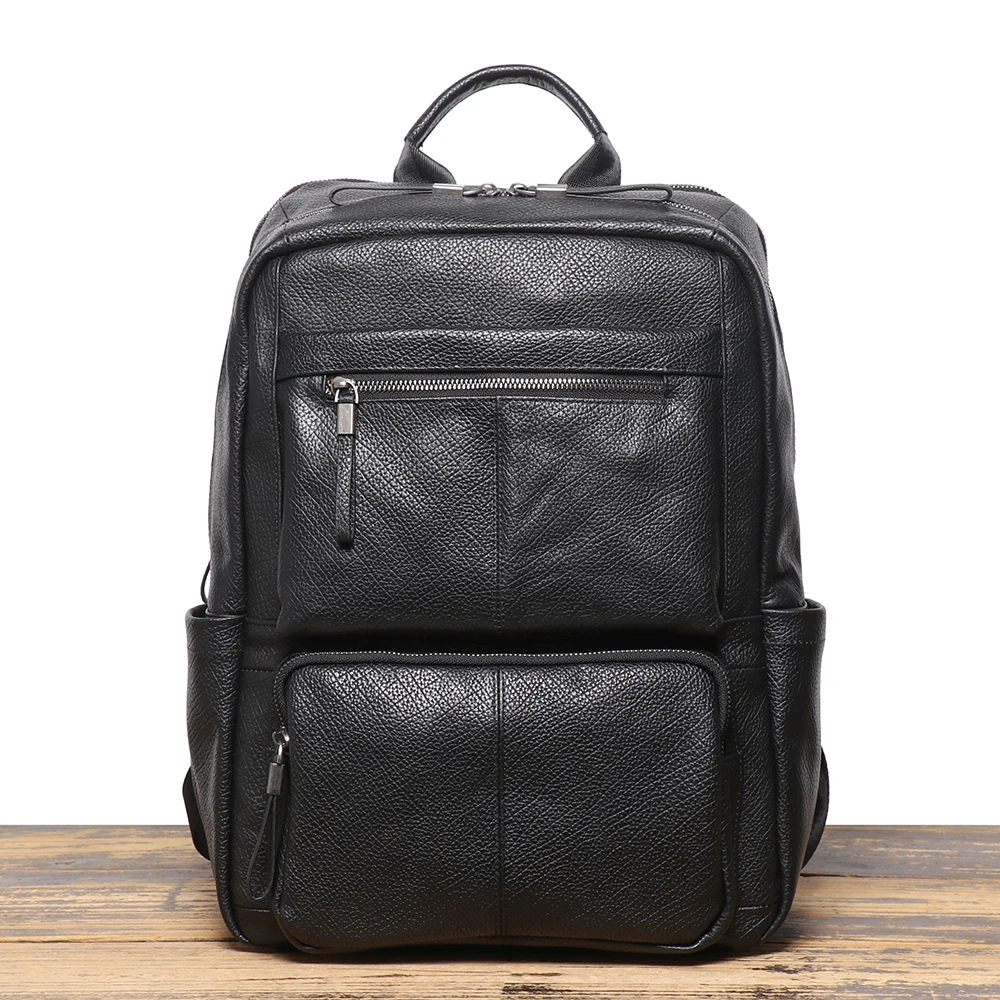
Advanced Travel Organization for Business Travelers
- Overnight essentials: Use compression packing cubes for clothing items
- TSA-friendly arrangement: Position electronics and liquids for easy removal during security screening
- Quick-change capability: Organize items so that you can transition from travel to meeting-ready without complete unpacking
Understanding which daily carry essentials for professionals are truly necessary helps prevent overloading your backpack. For a sophisticated organizational solution, consider a men’s leather work backpack that combines functionality with professional aesthetics.
14 Inch Leather Laptop Backpack, Brown Leather Backpack, Men's Leather Backpack, Vintage Leather Backpack
Price range: $177.28 through $199.12 Select options This product has multiple variants. The options may be chosen on the product pageDesigner Men's Backpack, Men's Leather Laptop Backpack, Men's Leather Work Backpack
Price range: $158.04 through $160.04 Select options This product has multiple variants. The options may be chosen on the product page15 Inch Leather Laptop Backpack, Leather Briefcase Backpack
$332.96 Select options This product has multiple variants. The options may be chosen on the product page17 Inch Leather Laptop Backpack, Men's Leather Travel Backpack, Men's Leather Work Backpack
Price range: $106.28 through $143.88 Select options This product has multiple variants. The options may be chosen on the product pageConvertible Leather Backpack, Women's Leather Backpack
$105.12 Select options This product has multiple variants. The options may be chosen on the product pageWomen's Leather Backpack, Women's Leather Work Backpack
Price range: $119.36 through $128.52 Select options This product has multiple variants. The options may be chosen on the product page
Essential Organizing Tools: Hardware for Backpack Mastery
The right organizational accessories can transform even the most basic backpack into an organizational powerhouse. Here are the tools worth considering:
Internal Organizer Solutions
- Tech organizers: Padded pouches with elastic loops for cables, adapters, and small electronics
- Grid organizers: Elastic grid systems that keep small items visible and accessible
- Document folios: Slim portfolios that prevent paper bending and disorganization
- Compression cubes: For clothing or bulky items when traveling with your backpack
External Organization Accessories
- Carabiner clips: Attach water bottles or frequently accessed items to external loops
- Key leashes: Prevent keys from getting lost in the depths of your backpack
- External pocket organizers: Add-on pouches that attach to straps for ultra-quick access items
Backpack Feature Assessment
When selecting a backpack, certain features dramatically improve organizational capacity:
- Multiple compartments: Look for thoughtfully separated spaces rather than one large compartment
- Internal pockets: Built-in organization is always more efficient than added accessories
- Water-resistant pockets: Protect electronics even when caught in unexpected weather
- Expandability: Adaptable capacity for changing daily needs
- Access variety: Top-loading, side access, and front-panel options for different situations
For leather backpack owners, understanding proper leather maintenance for commuters ensures these organizational systems remain functional long-term. Women professionals might prefer women’s leather laptop backpacks that combine elegant design with practical organizational features.
Organizational Maintenance: Sustainable Systems for Long-Term Success
Creating an organized backpack is only the beginning—maintaining that system is what separates temporary fixes from lasting solutions. Here’s how to develop sustainable habits:
Daily Routine Development
- Evening preparation: Spend 5 minutes each evening removing unnecessary items and preparing for tomorrow
- Morning verification: Quick 30-second check that all essentials are packed before leaving
- End-of-day reset: Remove any accumulated items (receipts, wrappers) before they become clutter
Weekly System Maintenance
- Sunday system reset: Complete emptying and reorganization once weekly
- Supply inventory: Check and replenish consumable items (pens, notepads, etc.)
- Evaluation check: Ask yourself what worked well and what didn’t in your current system
Seasonal Reorganization
- Term transitions: Complete reorganization between academic terms or project cycles
- Seasonal adjustments: Adapt for weather changes (rain gear, lighter clothing, etc.)
- Deep cleaning: Thoroughly clean your backpack at least quarterly

Psychological Approach to Maintenance
- Habit stacking: Attach organization maintenance to existing habits (like checking your phone)
- Visual triggers: Place a small reminder symbol on your backpack to prompt organizational checks
- Reward system: Acknowledge the satisfaction of an organized system and the efficiency it creates
For those whose needs change frequently, convertible leather backpacks offer adaptability to different organizational requirements while maintaining a consistent system.
Is Digital Organization Worth Integrating with Your Physical Backpack System?
Digital organization tools can complement physical backpack systems, but they’re not necessary for everyone. Consider these factors:
Digital-Physical Integration Benefits
- Digital inventory apps can track what’s in your backpack and remind you of essentials
- Photo documentation of your organized backpack serves as a reference for maintaining your system
- Calendar integration can help you pack according to daily meeting or class schedules
When Digital Tools Make Sense
- For those managing multiple backpacks for different purposes
- For people who frequently forget essential items
- When sharing organization systems with teammates or classmates
When Digital Tools Complicate Things
- If checking an app creates an additional step without clear benefits
- When battery dependency becomes a liability
- If maintaining the digital system takes more time than it saves
The most effective approach is often a minimal digital system that supports rather than replaces physical organization. Understanding the ultimate guide to backpack dimensions for tech gear helps determine the right balance between physical and digital organization tools.
How Can Specialized Backpack Organization Address Learning or Work Differences?
There’s no one-size-fits-all approach to backpack organization. Different learning styles, work requirements, and personal needs require customization:
Learning Style Adaptations
- Visual learners: Color-coding systems and clear pouches for visibility
- Auditory learners: Voice memo systems with quick-access recording devices
- Kinesthetic learners: Tactile organizers with different textures for different categories
Accessibility-Focused Organization
- One-handed access designs for those with mobility considerations
- High-contrast color-coding for visual impairments
- Simplified organizational structures for cognitive accessibility
Industry-Specific Modifications
- Creative professionals: Portfolio protection and material sample organization
- Healthcare workers: Sanitary separation and quick-change capability
- Tech professionals: Extensive cable management and device protection
The key is recognizing your unique needs and adapting basic organizational principles accordingly, rather than forcing yourself to use a system designed for someone else.
Why Do Most Backpack Organization Systems Fail (And How to Prevent It)?
Understanding common failure points helps create more resilient organization systems:
Psychological Barriers to Maintenance
- Perfectionism: Creating overly complex systems that are difficult to maintain
- Inconsistency: Failing to integrate organization into daily routines
- All-or-nothing thinking: Abandoning the entire system after minor lapses
Warning Signs of Impending Disorganization
- Finding items in incorrect compartments
- Increasing time spent searching for essentials
- Avoiding accessing certain parts of your backpack
- Carrying items in your hands or pockets that should be in your backpack
Recovery Strategies
- Don’t start from scratch—return to your original system
- Set a 10-minute timer for a quick reset rather than a complete reorganization
- Address the specific failure point rather than overhauling everything
Remember that perfection isn’t the goal—functionality is. Even a partially maintained organization system is better than none at all, and small adjustments over time lead to sustainable habits that serve you well in both academic and professional settings.
Whether you’re a student managing multiple subjects or a professional balancing work responsibilities, mastering backpack organization creates a foundation for daily success. By implementing these principles and adapting them to your specific needs, your backpack becomes not just a carrying tool, but a strategic asset in your productive life.

